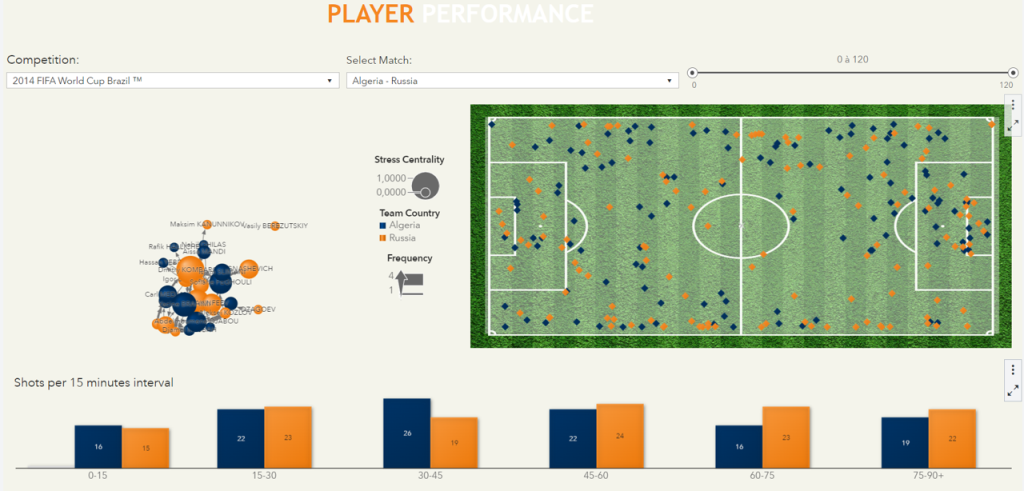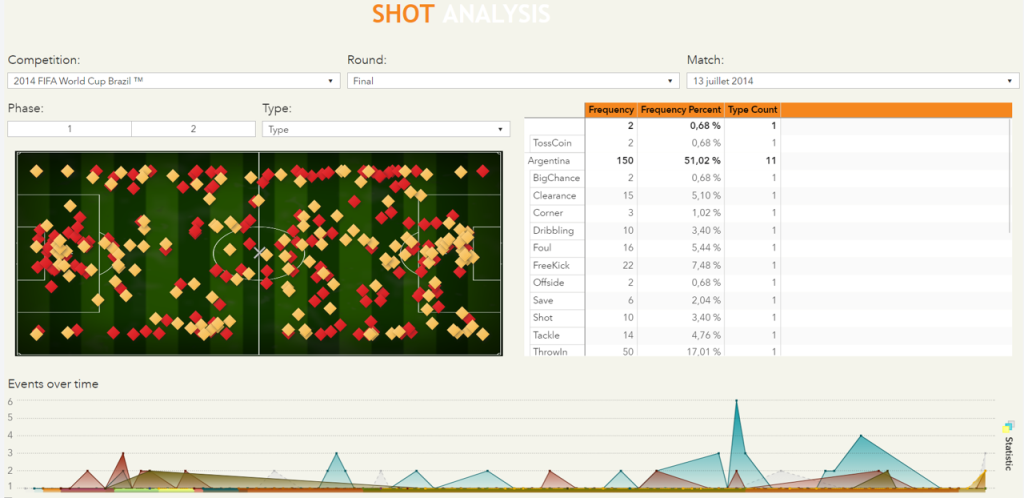
With the XV from France, AI enters the fray
After the triumph of the 2022 season, the French rugby team is preparing for the 2023 World Cup. Data will be widely used and analyzed, as will the Internet of Things. explanations.
2022 was a great year for the XV for France with Grand Slams in 6 Nations and important victories during the Autumn Tour. The national rugby team now awaits a big deadline: the World Cup in France from September 2023. The team chosen by Fabien Galthe will hope to win their first world title.
To achieve this, the federation provides resources to its coach, including technology. Thus, data, artificial intelligence and predictive analysis are part of the suite of tools available to Team France staff, coaches and sports scientists.
Multiple but fragmented data sources
To boost its game in the sector, FFR has also partnered with publisher SAS. To start the match in the field of analytics, the federation can count on a great wealth of data, notably GPS thanks to the sensors on board by the players and now also the ball since the Autumn Nations series.
Data is collected during training and competition for each player. “This classification is very important, but it is also useful to add event data, that is, game movement data. It makes it possible to place actions on the ground and detail them,” notes Charlotte Douet, data scientist at SAS France.
Read also: What is unlocking the potential of AI in 2023?
This information is retrieved from the data provider, which encodes the actions. XV of France analysts also record the actions associated with the schedule, in particular thanks to the video. So three separate databases are created.
As in business, the union faced data inflation and its fragmentation. Uses consist mainly of incidental studies. “The primary ambition was to centralize all information so that everyone had access to the same database, history, and working database.”
The second part of this technology collaboration: analyzing data assets with the goal of highlighting performance factors that are likely to influence matching results.
The key as the entry point for the data
The exploitation of data in sports is nothing new, and neither is technology. Football, for example, uses computer vision solutions to extract information. In rugby, the automated analysis of images is much more complex, especially during the scrum or rock phases. It is a future ambition. Meanwhile, the exploit focuses on structured data.
In addition, the analysis solution designed for Tricolor XV allows for a high degree of accuracy thus correlating game action (and its data) with its video. “Employees need to get this professional feedback through video,” explains the SAS expert. But before that, it was necessary to determine the needs of the athletes.
The first step in May 2021 consisted of a Design Thinking workshop. Short and long term goals appeared. First specific goal: key that has become An asset to the team from France. This choice is explained by the participation of Karim Ghazal, coach of the fifteenth touch, and his “awareness of data”.
“It was also the perfect procedure to allow us to adapt the rugby data by focusing on a fairly accurate and strategic game action,” specifies the data scientist in charge of the project.
According to the actions, starting from the key, the solution provides useful information such as the pitcher’s name, formation, position, ball release speed, etc. The analyzes are based on a history dating back to 2019 consisting of just over 1,000 matches, including 37 matches for France’s XV and 450 touches.
“The user can for example define filters, records, teams and ground areas, to display a dashboard that updates automatically and provides the required information. This will be, for example, the percentage of hits that allowed subsequent strikes or passes, ”explains Charlotte Duet.
Data and IA, a decision support tool
After the throw-in, these same data recovery features have been developed in the form of a dataviz for the other phases of the game: scrum, kicks, combinations after ruck, etc. Users were also trained to use the platform over several sessions to enable them to be independent in searching for information.
Data scientists also supported employees to turn a business question into a request. Example (may be important during the World Cup): What keeps the All Blacks running back the most? The answer lies in one of the modules that have been developed (note: for New Zealanders, the solution lies in the module for game collections).
Thus, the purpose of the platform is to assist in decision-making before matches and in decoding after them. It is not used in real time, and data feedback is not used. However, the competition is played out very early on, by identifying the opponent’s shortcomings and calibrating the training using the data.
“The training should look as similar as possible to the next game. To prepare them, we have developed a custom module that allows them, for example, to predict matching facts (…)” thanks to the use of the algorithm. This will refer, for example, to a number of dings or scratches and their associated areas of land.
These predictions feed into decision-making, not replace it, and the data scientist insists on turning to rugby during this project with FFR. Predictive functions and training module will be used by September to prepare for the big meeting in 2023.
At the end of the Autumn Tour, an assessment took place between the SAS teams and XV analysts from France. This aims to define the next developments for the platform. Among these, the use of data from connected balloons by integrating them into dashboards.
Some units will be paid, including those for passes and combinations. “We’ve got a new pivot we’re working on,” Charlotte Duet declares, without saying much to keep her tricolor collection secret. These tools will also be made available to other national teams, including the Women’s XV.

“Proud explorer. Freelance social media expert. Problem solver. Gamer. Extreme travel aficionado.”



